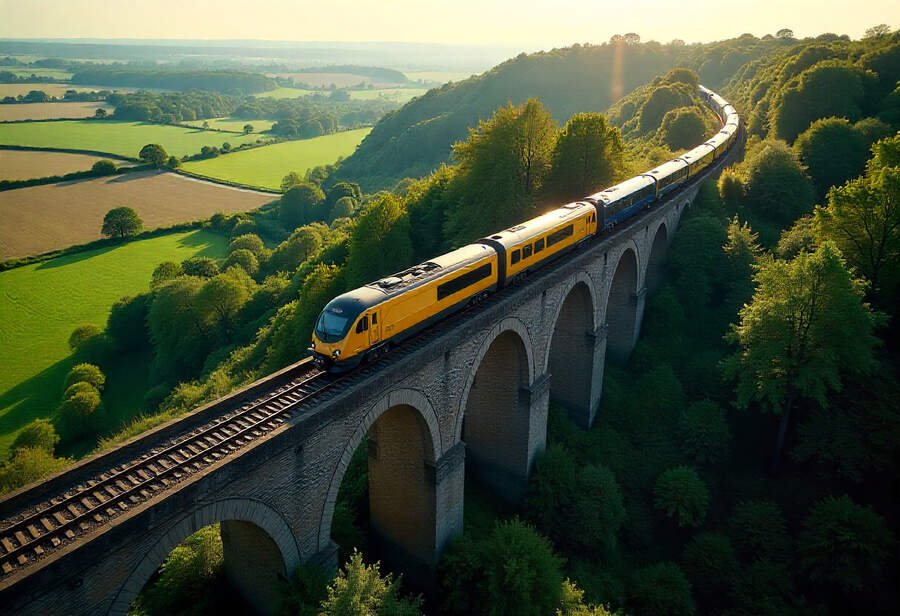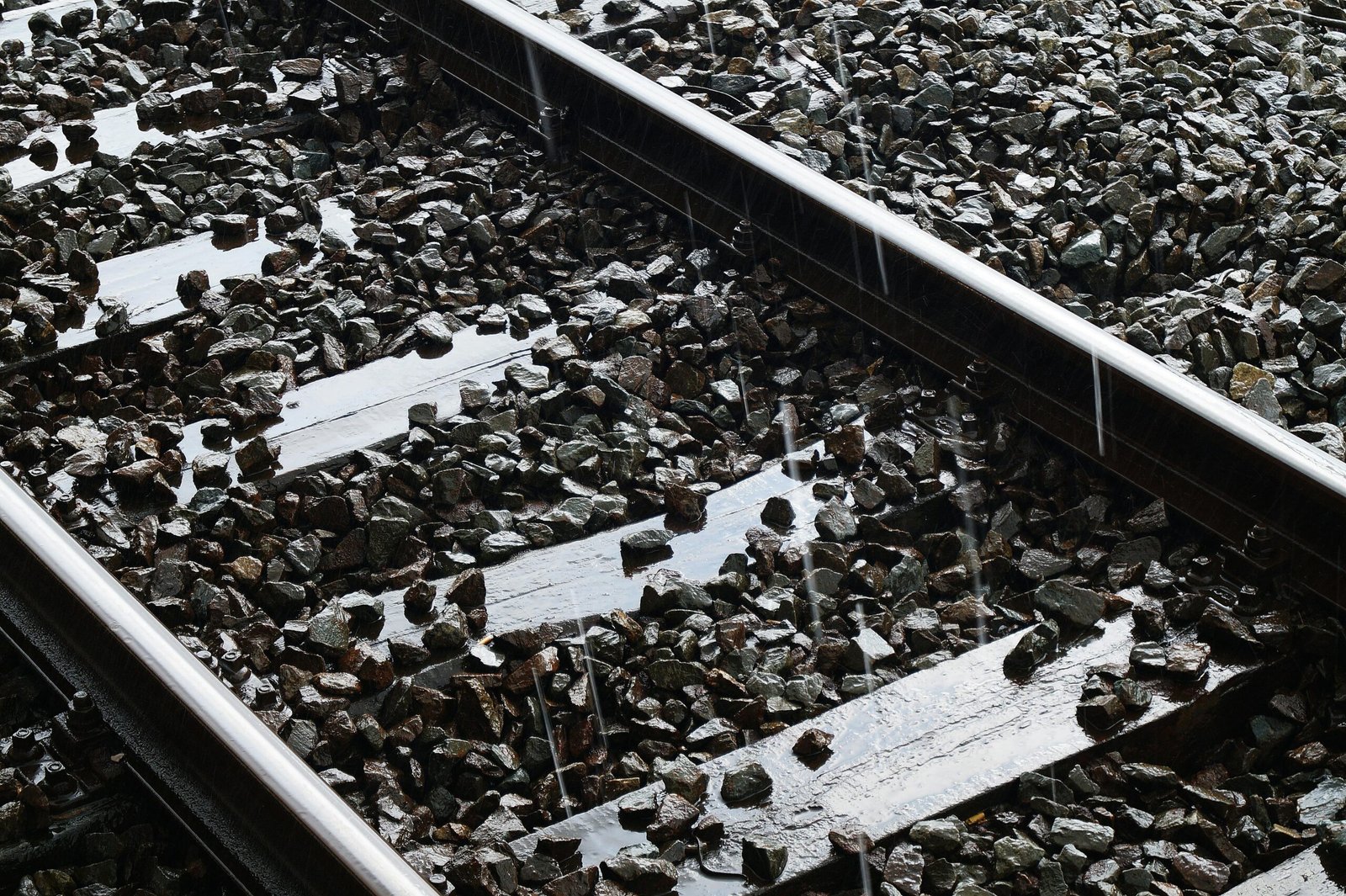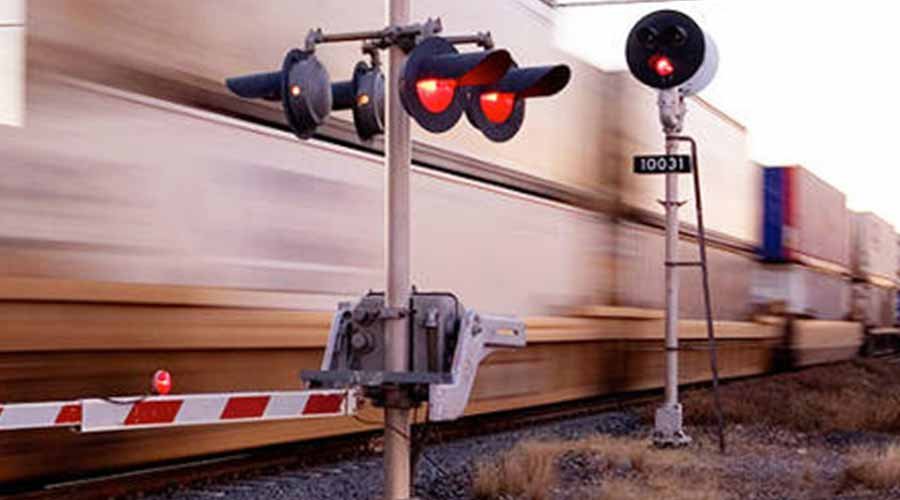Rail & Road
Chiltern Railways Leads the Way in Sustainable Rail Travel with New Eco-Friendly Trains and HVO-Powered Locomotives, Set for 2026

Published on
August 9, 2025 |
Chiltern Railways will deploy new environmentally friendly trains and HVO locomotives by 2026, a move that marks one of the most significant milestones in green rail travel. Taking this path makes NewCold one of the front runners in environmentally friendly transportation, changing from conventional diesel to Hydrotreated Vegetable Oil (HVO), a biofuel which leads to considerable reduction in greenhouse gas emissions. As well as future-proofing its fleet, Chiltern Railways is leading by example in rail related environmental responsibility and paving the way for cleaner greener UK rail travel. The move is a taste of things to come for the industry as it looks to combat climate targets and rising consumer pressure for greener travel.
Chiltern Railways is preparing to introduce a new generation of trains, including state-of-the-art locomotives and Mark 5A passenger coaches built by CAF. Scheduled to begin operations in 2026, these upgraded trains will replace the aging rolling stock currently in service, offering enhanced performance and sustainability. These new trains will significantly improve travel options on routes connecting London with Buckinghamshire, Oxfordshire, and the West Midlands, aligning with the company’s broader goals of modernizing the rail experience and reducing its environmental impact.
Pioneering Green Innovation in Rail Travel
In a progressive move towards sustainable rail transport, Chiltern Railways began incorporating Hydrotreated Vegetable Oil (HVO) in its Class 68 locomotives starting in July 2023. This initial trial allowed the company to assess the fuel’s efficiency and impact, and it marks a significant milestone in their transition to cleaner energy sources. By shifting to HVO, the company is taking bold steps to reduce its carbon footprint, while still maintaining high levels of service for its passengers.
HVO is a renewable, low-carbon fuel made from organic materials like vegetable oils. Unlike traditional diesel, HVO significantly reduces emissions by up to 90% over its full lifecycle—from production to combustion. This move is part of a wider effort by Chiltern Railways to lead the industry in sustainable transport solutions. By adopting alternative fuels like HVO, the company is positioning itself as a key player in reducing the environmental footprint of the UK’s rail network.
While diesel still dominates much of the UK’s regional rail operations, the company’s transition to greener fuels reflects a growing trend in the industry toward more climate-conscious transportation options. The switch to HVO is a vital step forward as the company works toward lowering its reliance on fossil fuels and increasing the availability of eco-friendly travel alternatives.
Reducing Environmental Impact Through HVO Integration
Chiltern Railways operates a rail network covering 336 km, with a fleet that includes 64 diesel multiple units, 25 locomotive-hauled coaches, and 8 locomotives. The integration of HVO-powered trains will lower the company’s dependence on traditional diesel and help reduce emissions, particularly on its busiest intercity routes. This move will contribute to the company’s broader environmental goals, which are in line with the UK government’s target of reaching net-zero carbon emissions by 2050.
The environmental benefits of switching to HVO are significant. HVO not only produces fewer harmful pollutants such as nitrogen oxides and particulate matter, but it is also sourced from waste vegetable oils that would otherwise be discarded. This reduces the environmental impact of the agricultural sector and supports a circular economy by making use of by-products. The adoption of this cleaner fuel will help Chiltern Railways achieve its sustainability objectives while still delivering a reliable and efficient service to passengers.
The Road Ahead for Sustainable Rail Travel
Chiltern Railways’ commitment to sustainability is part of a larger trend in the rail industry, which is increasingly focusing on reducing the environmental impact of operations while maintaining high levels of performance and service. The move to introduce new HVO-powered trains is just one part of the company’s wider vision for a greener future. Though electrifying the network entirely remains a long-term challenge, the adoption of alternative fuels like HVO represents a practical solution for reducing emissions in the immediate term.
In addition to its focus on alternative fuels, Chiltern Railways is also implementing other initiatives aimed at reducing energy consumption and improving efficiency across its operations. The company’s approach includes optimizing the performance of its existing trains, as well as improving its infrastructure and working with suppliers to promote more sustainable practices. These combined efforts are helping to position the company as an industry leader in sustainable transport and set an example for other rail operators to follow.
Shaping the Future of Sustainable Rail Mobility
By incorporating HVO-powered trains into its fleet, Chiltern Railways is taking an important step in its ongoing effort to make sustainable rail transport the standard. As part of the UK’s broader push toward reducing carbon emissions, this transition represents a key part of the country’s strategy to achieve net-zero emissions by 2050. While electrification remains a longer-term goal, the company’s adoption of HVO is an essential step toward reducing reliance on fossil fuels in the meantime.
The drive for sustainable rail transport is not just about reducing emissions; it also responds to growing passenger demand for more eco-friendly travel options. As the rail industry embraces alternative fuels and technologies, it is creating a more sustainable and responsible future for transportation. Chiltern Railways, with its commitment to long-term solutions, is at the forefront of this transformation.
Chiltern Railways is leading the charge in sustainable rail travel with its introduction of eco-friendly trains and HVO-powered locomotives, set for 2026. This move significantly reduces emissions and sets a new standard for greener rail transport in the UK.
The company’s ongoing investments in sustainable transport solutions, such as the upcoming rollout of new, energy-efficient trains, will have a lasting impact on the future of rail travel in the UK. Chiltern Railways is committed to reducing its environmental footprint while maintaining the high standards of service that its passengers expect. The company’s sustainable practices not only benefit the environment but also contribute to a more eco-conscious future for the entire transportation sector.
Rail & Road
Drainage, CP7 & the Implications for Rail Safety

As investment in rail infrastructure begins to accelerate via Network Rail’s £45-billion of CP7 funding, 75% of which will be spent on maintenance and renewal projects, (name and job title) explains why drainage is now a core focus for the rail industry and why it’s finally being recognised for the vital role it plays in ensuring the safety of the rail network.
Drainage has been an age old problem for network operators causing soft spots in track stability and effecting the maximum safe speed at which trains can operate but the full impact of poor drainage was not fully understood and in fact, for many years, drainage was seen as a relatively low-priority, commodity product by the rail industry. That all changed in 2020.
On 12 August that year, after a period of extreme and torrential rainfall, the Aberdeen to Glasgow train derailed at Carmont near Stonehaven, Aberdeenshire resulting in the deaths of three men and injury to its six passengers.
Having left the track, the train collided with a bridge parapet which caused the train to veer off the bridge and down the steep embankment below the bridge. The subsequent investigation found that the derailment of the train, which had already been prevented from completing its journey south because of a landslip south of Carmount, was caused by gravel and other stony debris being washed out of a drain and onto the track. In effect, a drainage failure.
A joint investigation by Police Scotland, British Transport Police and the Office of Rail and Road (ORR) under the direction of Crown Office and the Procurator Fiscal Servicei and the related 2022 report highlighted three key issues: Network Rail failed to ensure that its contractor had built the drain in accordance with the approved design; it had not inspected the whole drain since its construction, and its staff had not been comprehensively trained to effectively analyse weather forecasts or in how to use all available weather data resources – an important factor as high intensity rainfall events, which make mitigating flood risks a priority, are becoming increasingly common.
With the ongoing impact of climate change and more recently recorded incidents on the rail network, a much more robust approach to water management is now been adopted and drainage has become a significant area of focus for Britain’s rail industry.
Balfour Beatty said:
Drainage is now the biggest issue for the rail network to resolve.
Falling under Network Rail’s ‘Core Assets Renewals’ segment of CP7 expenditure which totals more than £19bn, drainage is now valued for the impact it has on network efficiency, costs and importantly, passenger safety – a core area of focus for CP7. Addressing the issues around drainage is seen as a particularly pressing concern because of the effects of climate changeii.
Network Rail for its part is taking drainage very seriously. It has set up a ‘specialist drainage group’, has published a challenge statement with regard to drainage which summarises the need for better drainage and the issues facediii, and now routinely conducts drainage assessments across its network. As an industry, the construction products sector and its merchant partners also have a role to play.
Following changes to the product approval processes used within the rail industry, the need for PADS approval on drainage products has now been removed and as a result, the engineering community is now responsible for drainage design. This means engineers are now able to focus on product performance rather than having to use what some rail engineers considered to be a restricted list of approved products.
As a result, drainage, culverts and other assets are now being designed to assume that major storms or rainfall events will occur on an annual basis and not once in every 50 years, the previous design requirement.
The move away from PADS approval will also give the understandably risk-adverse rail industry the opportunity to access drainage and water management systems which have been tried and tested in similar applications such as highways, an area where Naylor has a strong track record with products including Naylor’s popular ‘MetroDrain’ system which is ranked number one by National Highways and its ‘AquaVoid’ water attenuation system which is designed specifically to deal with stormwater at or near to its source.
It also means that drainage manufacturers and their merchant partners are now in a position to give the rail sector informed specification guidance based on the full range of drainage and flood management systems which are available for them to use, and importantly their in-situ performance in rail and related applications.
Our hope at Naylor is that this, coupled with the strong focus on drainage within CP7, will help drive the specification of future-proofed, high performance drainage solutions in the rail industry which will enhance the safety and operating efficiency of our rail network, and ultimately benefit us all.
This article was originally published by Naylor.
Tags
Products & Services
Rail & Road
New Leadership For Queensland Rail
- The Crisafulli Government has strengthened the Queensland Rail Board with four new appointments.
- New appointments bring extensive experience and fresh perspectives.
- Includes appointment of Andrew Wellington as Board Chair.
Four new appointments have today been announced for the Queensland Rail Board.
The four new appointees join continuing member Loretta Lynch, and bring together industry knowledge across rail operations, cyber security, technology transformation, finance and manufacturing, and include:
- Andrew Wellington – Chair
- Lisa Hewitt
- Julian Haber
- Wendy McMillan
Minister for Transport and Main Roads Brent Mickelberg welcomed the new appointments.
“I want to thank the outgoing members for their contribution and welcome the four new members who bring a mix of extensive industry experience and new, valuable perspectives,” Minister Mickelberg said.
Shareholding Minister and Treasurer David Janetzki said the appointments would further strengthen the Board.
“These changes bring together a team of exceptional leaders with a breadth of experience across government and industry,” Mr Janetzki said.
Rail & Road
Rail News – U.S. freight-rail traffic climbs 2.9% in Week 31. For Railroad Career Professionals

U.S. freight-rail traffic rose 2.9% to 513,529 carloads and intermodal units in the week ending Aug. 2 compared with traffic results in the same week in 2024, according to Association of American Railroads data.
Railroads hauled 233,805 carloads, a 6.4% increase, and 279,724 containers and trailers, a 0.2% increase.
Nine of the 10 carload commodities that AAR tracks weekly logged an increase. Gainers included grain, up 25.7% to 21,557 carloads; coal, up 4.9% to 61,962; and motor vehicles and parts, up 10.2% to 15,822 carloads. The commodity group that posted a decrease was petroleum and petroleum products, down 1.7% to 10,829 carloads.
Meanwhile, Canadian railroads reported 88,410 carloads for the week, down 2.2%, and 72,286 intermodal units, up 13%. Mexican railroads reported 15,356 carloads, a 19.1% increase, and 11,079 intermodal units, a 8.2% increase
For the first 31 weeks of 2025 compared to the same period in 2024:
• U.S. railroads reported 15,162,611 carloads and intermodal units, up 3.8%;
• Canadian railroads posted 5,035,654 carloads, containers and trailers, up 1.6%; and
• Mexican railroads logged 745,152 carloads and intermodal units, down 5.1%.
-

 Brand Stories3 weeks ago
Brand Stories3 weeks agoBloom Hotels: A Modern Vision of Hospitality Redefining Travel
-

 Brand Stories2 weeks ago
Brand Stories2 weeks agoCheQin.ai sets a new standard for hotel booking with its AI capabilities: empowering travellers to bargain, choose the best, and book with clarity.
-

 Destinations & Things To Do3 weeks ago
Destinations & Things To Do3 weeks agoUntouched Destinations: Stunning Hidden Gems You Must Visit
-

 Destinations & Things To Do2 weeks ago
Destinations & Things To Do2 weeks agoThis Hidden Beach in India Glows at Night-But Only in One Secret Season
-

 AI in Travel3 weeks ago
AI in Travel3 weeks agoAI Travel Revolution: Must-Have Guide to the Best Experience
-

 Brand Stories1 month ago
Brand Stories1 month agoVoice AI Startup ElevenLabs Plans to Add Hubs Around the World
-

 Brand Stories4 weeks ago
Brand Stories4 weeks agoHow Elon Musk’s rogue Grok chatbot became a cautionary AI tale
-

 Brand Stories2 weeks ago
Brand Stories2 weeks agoContactless Hospitality: Why Remote Management Technology Is Key to Seamless Guest Experiences
-

 Asia Travel Pulse1 month ago
Asia Travel Pulse1 month agoLooking For Adventure In Asia? Here Are 7 Epic Destinations You Need To Experience At Least Once – Zee News
-

 AI in Travel1 month ago
AI in Travel1 month ago‘Will AI take my job?’ A trip to a Beijing fortune-telling bar to see what lies ahead | China













You must be logged in to post a comment Login